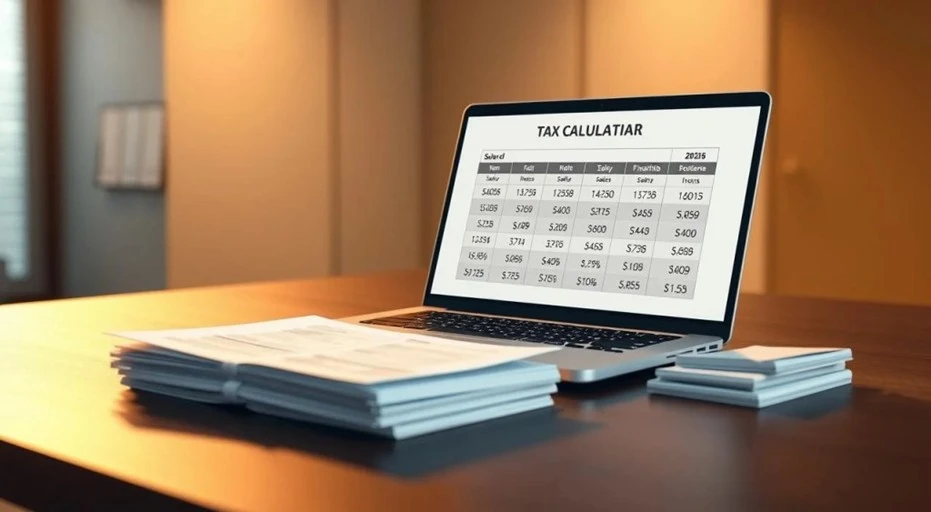Introduction
If you’re earning a ₹14 lakh annual salary in the financial year 2025-26, understanding your income tax liability is crucial. With evolving tax rules and two different regimes to choose from, your actual tax outgo can vary significantly depending on the deductions and exemptions you claim.
This guide explains the latest tax rates, compares the old and new regimes, and provides detailed calculations so you know exactly how much you’ll owe—and how to reduce it.
Key highlights:
- A ₹14 lakh salary spans multiple tax slabs under both regimes.
- Strategic use of deductions under Sections 80C, 80D, and others can lower your tax bill.
- The choice between the old and new regime can change your payable tax by thousands.
- Online tax calculators and spreadsheets can simplify planning.
Income Tax Basics in India
India’s income tax system is progressive—meaning higher earners pay a larger percentage in tax. The Income Tax Act, 1961, sets the rules for tax slabs, deductions, and compliance.
FY 2025-26 Income Tax Slabs (Old Regime):
| Income Range | Tax Rate |
|---|---|
| Up to ₹2.5 lakh | Nil |
| ₹2.5 lakh – ₹5 lakh | 5% |
| ₹5 lakh – ₹10 lakh | 20% |
| Above ₹10 lakh | 30% |
Tax Slabs for ₹14 Lakh Salary: Old vs New Regime
In FY 2025-26, taxpayers can choose between:
- Old Regime – Higher rates but allows multiple deductions (80C, HRA, etc.)
- New Regime – Lower rates but very limited deductions
Comparison Table:
| Income Range | Old Regime Rate | New Regime Rate |
|---|---|---|
| Up to ₹2.5 lakh | Nil | Nil |
| ₹2.5 – ₹5 lakh | 5% | 5% |
| ₹5 – ₹10 lakh | 20% | 10% |
| Above ₹10 lakh | 30% | 30% |
| Deductions Allowed | Yes | No |
Estimated Tax Liability (before cess):
- Old Regime (with full deductions): ~₹1.89 lakh
- New Regime (no deductions): ~₹1.54 lakh
Step-by-Step Tax Calculation for ₹14 Lakh Salary
Let’s break it down using the old regime (assuming you claim standard deductions and eligible exemptions):
- Gross Salary: ₹14,00,000
- Standard Deduction: ₹50,000 → Taxable Income: ₹13,50,000
- Section 80C Deductions: ₹1,50,000 (PF, ELSS, LIC, etc.) → ₹12,00,000
- Section 80D (Health Insurance): ₹25,000 → ₹11,75,000
- Section 24(b) Home Loan Interest: ₹2,00,000 → ₹9,75,000 taxable
Tax Computation:
- 0–₹2.5 lakh: Nil
- ₹2.5–₹5 lakh: 5% = ₹12,500
- ₹5–₹10 lakh: 20% = ₹1,00,000
- ₹10–₹9.75 lakh: (not applicable after deductions)
Total Tax (before cess): ₹1,12,500
After 4% cess: ₹1,17,000 approx.
Key Deductions to Reduce Tax
- Section 80C: Up to ₹1.5 lakh for PPF, ELSS, NPS, life insurance premiums
- Section 80D: ₹25,000 (₹50,000 for senior citizens) for health insurance
- Section 24(b): ₹2 lakh deduction on home loan interest
- HRA: Exemption for salaried individuals paying rent
- LTA: Tax-free allowance for domestic travel expenses
Popular Exemptions
- House Rent Allowance (HRA) – For those living in rented homes
- Standard Deduction – ₹50,000 for all salaried individuals
- Leave Travel Allowance (LTA) – Tax-free travel expenses within India
Example: Effective Tax Rate for ₹14 Lakh Salary
If your final tax after deductions is ₹1.17 lakh, your effective tax rate = (1.17 lakh / 14 lakh) × 100 ≈ 8.35%
Without deductions (new regime), this rate can jump to around 11%.
Tools to Make Tax Planning Easier
- Online Tax Calculators: Enter your income and deductions to get instant estimates.
- Spreadsheets: Build your own tracker to plan investments and deductions throughout the year.
Conclusion
For a ₹14 lakh salary in FY 2025-26, the difference between choosing the right regime and ignoring deductions can be over ₹35,000 in savings. If you have significant deductions, the old regime may still be better. If not, the new regime could lower your tax bill.
Bottom line: Stay updated with the latest tax rules, claim eligible deductions, and plan your finances early to keep more money in your pocket.
